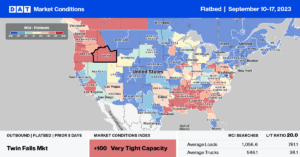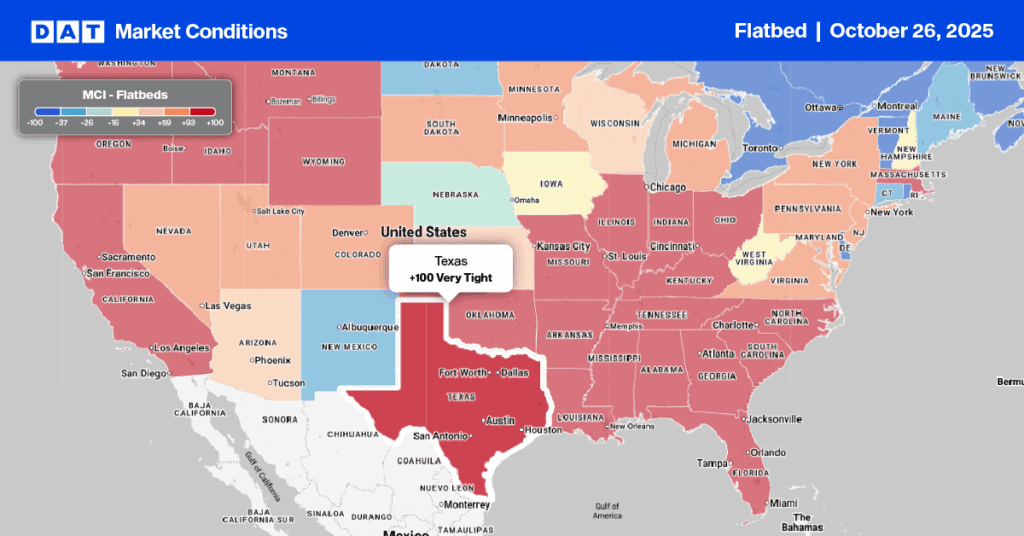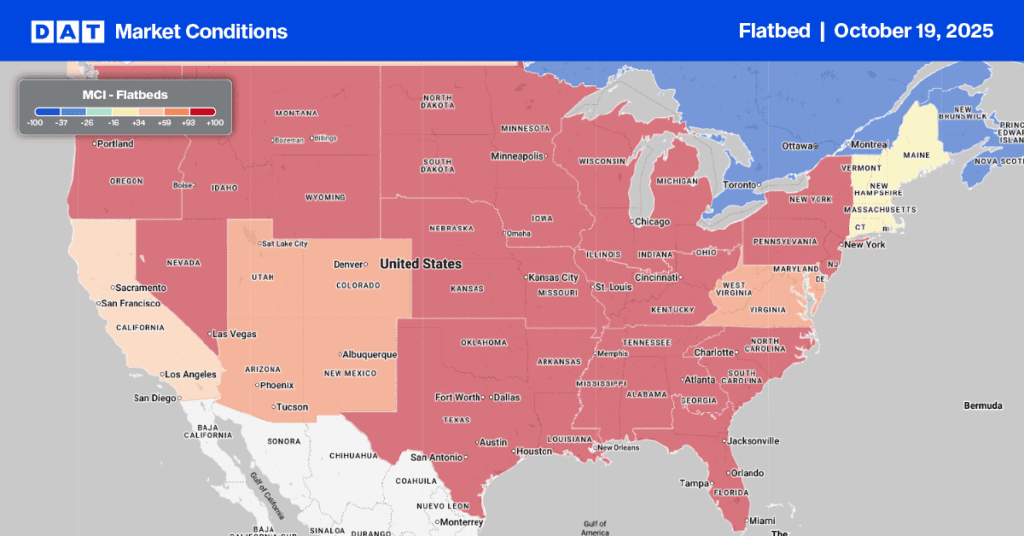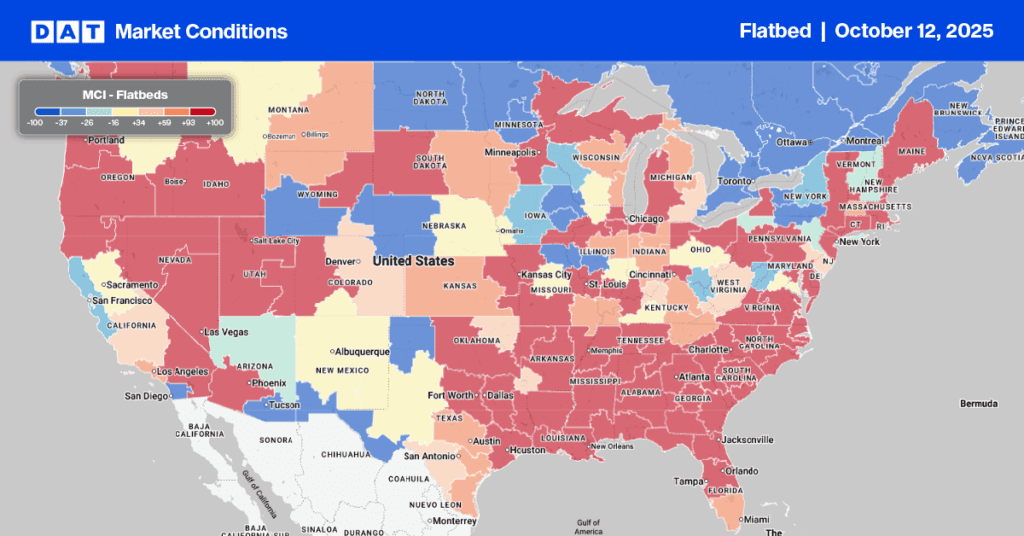Steel output in the U.S. in the week ending September 2, 2023, was up by 1.2% compared with the same time frame in 2022, according to the American Iron and Steel Institute (AISI). Year-to-date production through September 2, 2023, was 59,844,000 net tons (NT) at a capability utilization rate of 76.0%. That is down 1.8% from the 60,948,000 NT during the same period last year. In flatbed truckload equivalent terms, that’s approximately 36,800 fewer truckloads of steel this year.
Regionally, tonnage in the Great Lakes was up 1.1% or 6,000 tons w/w, down 4.5% in the Midwest, and in the Southern region, tonnage was down 3.1% or 23,000 tons w/w. Indiana was ranked first in tonnage, down 0.2% m/m and up 22.9% y/y. Ohio was ranked second in tonnage, up 5.9% m/m and down 7.6% y/y. It was at its highest tonnage so far for the year. Texas was third in tonnage, down 14.2% m/m and 10.7% y/y.
July steel imports were down 15.2% m/m and 13.7% over the 12 months from August 2022 to July 2023. In July, the most significant suppliers were Canada (531,000 NT, down 16% vs. June), Brazil (384,000 NT, down 8%), Mexico (291,000 NT, down 30%), South Korea (158,000 NT, down 58%) and Japan (122,000 NT, up 50%).
Market Watch
All rates cited below exclude fuel surcharges unless otherwise noted.
Flatbed capacity was tight in the Medford, OR, market last week. Spot rates jumped $0.20/mile to $2.75/mile, while regional loads to Stockton paid $3.26/mile, which is $0.25/mile lower than last year. In Fresno, loads paid $1.88/mile, up $0.07/mile last week, with regional loads to Reno averaging $2.58/mile. After dropping for the prior two weeks, capacity tightened slightly in Houston, where spot rates increased by $0.01/mile to an average of $2.01/mile.
On the Houston to Lubbock lane, loads destined for the Permian Basin oilfield are at the lowest level in 12 months at $2.12/mile – $1.27/mile lower than last year. According to Baker Hughes, the oil and gas drilling rig count is around 15% lower than last year, resulting in fewer loads of drill pipe, casing, and machinery in this lane. Average flatbed linehaul rates in Texas were flat last week, averaging $1.92/mile, just $0.07/mile higher than in 2019.

Load-to-Truck Ratio (LTR)
Even though flatbed load post (LP) volume continues to track at around half what it was in 2019 and this time last year, load posts have increased 25% in the last month following last week’s 19% w/w increase. Carrier equipment posts were up by just over 16% w/w, increasing the flatbed load-to-truck ratio (LTR) slightly from 6.85 to 6.99.
Spot Rates
Flatbed linehaul rates were mostly flat last week and, at $1.92/mile, are identical to the six-week average. After dropping $0.22/mile since the start of June, flatbed linehaul rates show signs of bottoming out $0.24/mile lower than last year and only $0.03/mile higher than in 2019.


